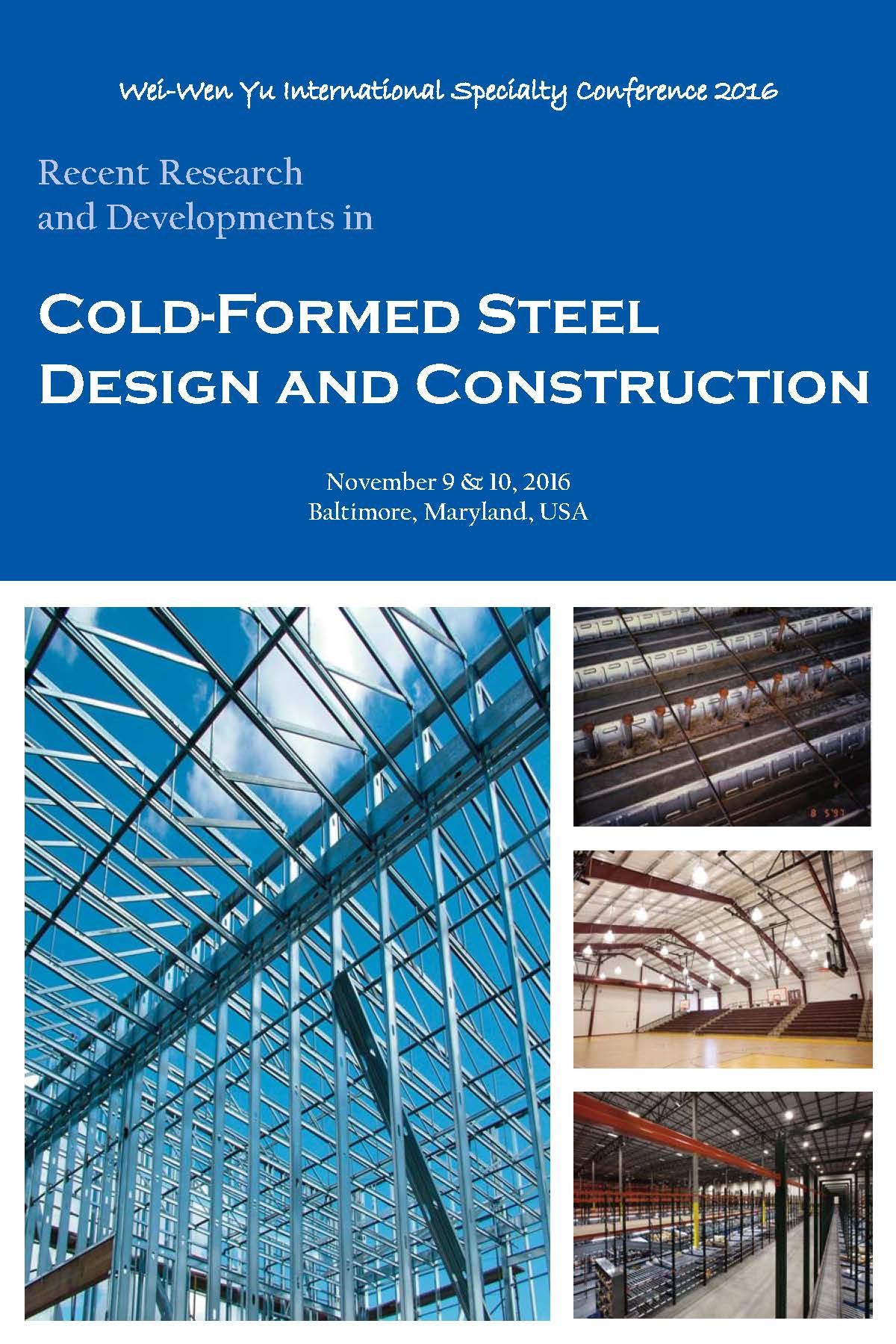Session Dates
09 Nov 2016
Abstract
This research is concerned with the buckling behaviour and design of cold-formed steel beams subject to combined bending and torsional actions. A finite element model considering the effects of initial geometrical imperfections and residual stresses was developed to simulate the combined bending and torsion of cold-formed steel beams. The finite element model was used to conduct analysis on cold-formed lipped channel sections, Z sections and hollow flange channel sections. Elastic buckling analysis was first conducted to study their buckling modes and buckling loads. Nonlinear analysis including the effects of large deformation and material yielding was conducted to obtain their ultimate buckling strength. The interaction between the ultimate bending and torsional moment capacities was studied and appropriate design rules were suggested. This paper presents the essential details of this research and the important results.
Department(s)
Civil, Architectural and Environmental Engineering
Research Center/Lab(s)
Wei-Wen Yu Center for Cold-Formed Steel Structures
Meeting Name
International Specialty Conference on Cold-Formed Steel Structures 2016
Publisher
Missouri University of Science and Technology
Document Version
Final Version
Rights
© 2016 Missouri University of Science and Technology, All rights reserved.
Document Type
Article - Conference proceedings
File Type
text
Language
English
Recommended Citation
Wan, Hong-Xia and Mahendran, Mahen, "Buckling Behaviour of Cold-Formed Steel Beams under Bending and Torsion" (2016). CCFSS Proceedings of International Specialty Conference on Cold-Formed Steel Structures (1971 - 2018). 2.
https://scholarsmine.mst.edu/isccss/23iccfss/session3/2
Buckling Behaviour of Cold-Formed Steel Beams under Bending and Torsion
This research is concerned with the buckling behaviour and design of cold-formed steel beams subject to combined bending and torsional actions. A finite element model considering the effects of initial geometrical imperfections and residual stresses was developed to simulate the combined bending and torsion of cold-formed steel beams. The finite element model was used to conduct analysis on cold-formed lipped channel sections, Z sections and hollow flange channel sections. Elastic buckling analysis was first conducted to study their buckling modes and buckling loads. Nonlinear analysis including the effects of large deformation and material yielding was conducted to obtain their ultimate buckling strength. The interaction between the ultimate bending and torsional moment capacities was studied and appropriate design rules were suggested. This paper presents the essential details of this research and the important results.



